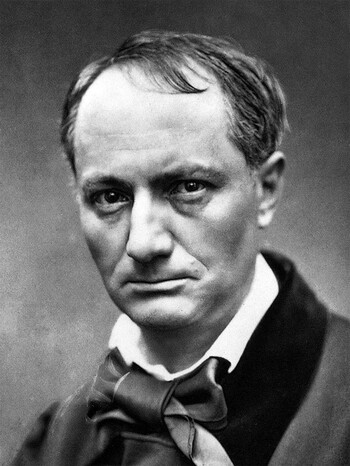
Charles Pierre Baudelaire was born in Paris 9 April 1821. His father died when he was six years old, and he was raised by the family servant. His mother remarried a soldier with whom Baudelaire did not get on well.
When he was young, he lived a bohemian life and often visited the literary places of the Latin Quarter of Paris. There, he befriended Delacroix and Balzac. His family repudiated him because of his dissolute behaviour and drug addiction.
His most important work is Les fleurs du mal, published in 1857 when he was 36. It caused a major scandal and six of its poems were condemned by the justice for being immoral.
In the last years of his life, Baudelaire found himself overwhelmed by both debts and disease. After spending some time in Brussels, he died in Paris 31 August 1867 at the age of 46.
Baudelaire was one of the most influential poets of the 19th century. His literary work is characterised by the following traits:
Baudelaire represents the link between the romantic poets of the first half of the nineteenth century and the symbolist poets of the second half of that century. He is considered to be one of the most important precursors of twentieth century literature. His literary work, both in poetry and in literary criticism, has had a great influence in subsequent generations, not just in France but anywhere else.
The dichotomy between the sublime and the evil, between the realm of the ideas and the realm of the mundane, presents a new spirit and a new perception of the modern world. Baudelaire used the symbol (hence symbolism) in his poetry as an image linked to an idea which is precise by the end of the poem.
From his works we can highlight:
· La Fanfarlo (1847), nouvelle
· Du vin et du haschisch (1851)
· L'Art romantique (1852)
· Les Fleurs du mal (1857)
· Les Paradis artificiels (1860)
· Réflexions sur quelques-uns de mes contemporains (1861)
· Richard Wagner et Tannhäuser à Paris (1861)
· Le Spleen de Paris (1869), poème en prose (posthume)
· Le Peintre de la vie moderne (1863)
· Mon cœur mis à nu (1864), journal intime
· Curiosités esthétiques (1868)
· L'Art romantique (1869)
His two most famous books, Les fleurs du mal and Le Spleen de Paris, can be found at Linguae on this link.